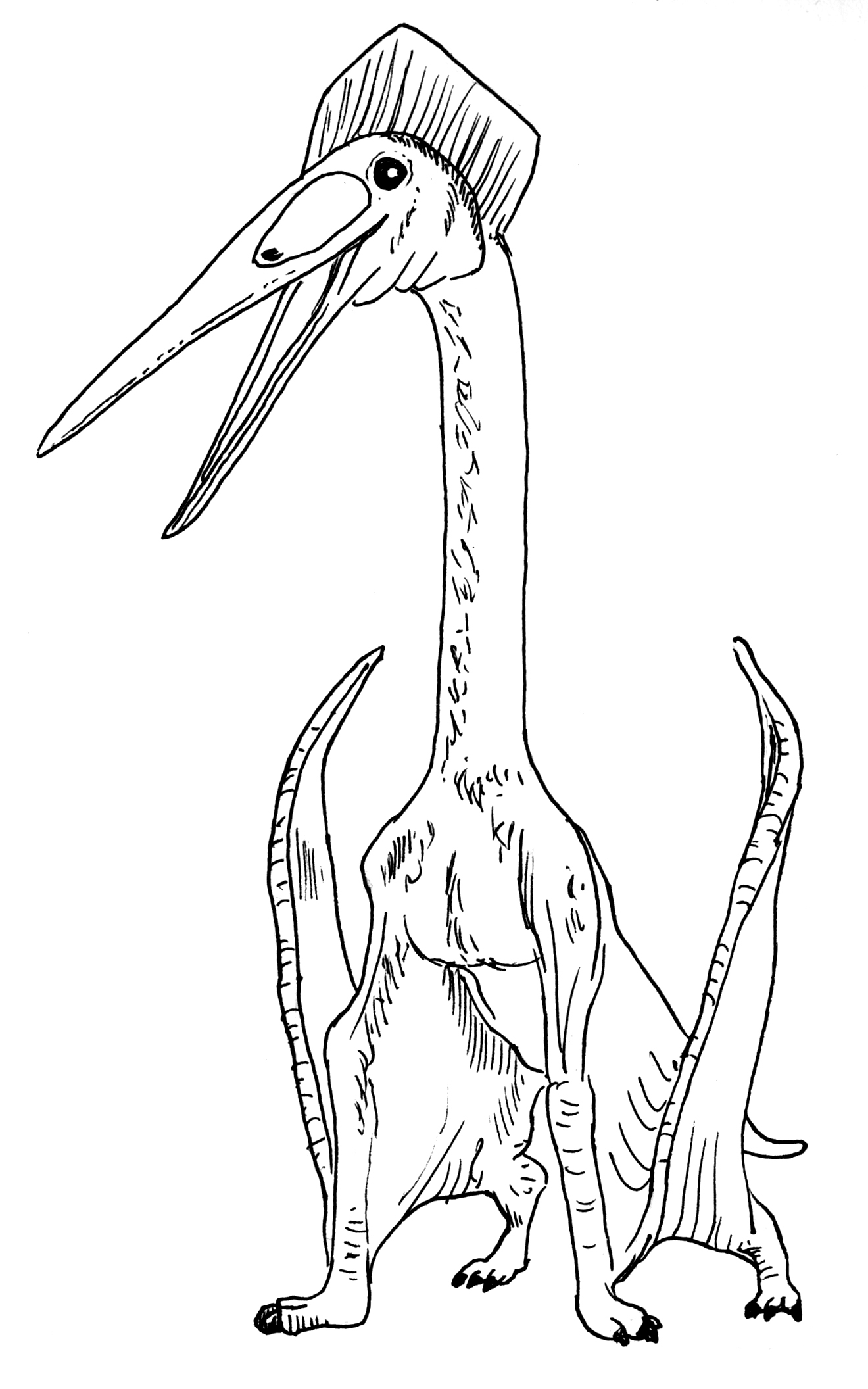Review of David Attenborough’s Life Stories – Quetzalcoatlus
Review of Life Stories – Quetzalcoatlus
In yesterday evening’s, Radio 4 broadcast, naturalist and presenter Sir David Attenborough discussed Quetzalcoatlus (Q. northropi). In this ten minute programme, part of the “Life Stories” series written and presented by Sir David, he talked about the discovery of the first pterosaur fossils, how the name pterodactyl came into scientific usage (merci Cuvier), and the finding of the fragmentary fossils of a huge flying reptile in Texas in 1971.
Quetzalcoatlus
It was great to hear him discuss the contribution of Mary Anning and his thoughts on how Quetzalcoatlus, the name of the flying reptile discovered in Texas, might have lived. The long stiff neck and the large, toothless beak may have been used to probe inside the carcases of dead dinosaurs. Sir David had observed vultures with their long necks reaching inside the body cavities of dead antelopes in Africa, so he surmised that an animal such as Quetzalcoatlus may have had a similar niche in the Late Cretaceous food chain.
The talk was delivered in Sir David’s usual elegant and erudite style, just a couple of points that our sharp-eared team members who listened picked up on. Firstly, the concept of Quetzalcoatlus scavenging the carcases of T. rex and Giganotosaurus was mentioned. Whilst in theory, Quetzalcoatlus could have fed on the remains of Tyrannosaurus, Giganotosaurus (G. carolini) lived in South America a long way from where the fossil remains of this pterosaur have been found and indeed, Giganotosaurus lived millions of years earlier.
Also, although other Azhdarchidae fossil sites (Quetzalcoatlus is a member of the Azhdarchidae pterosaur family), were briefly mentioned, there is a debate as to whether this particular pterosaur is the largest flying creature known to science. Recently, the fossils of another large pterosaur have been uncovered in eastern Europe. This animal has been named Hatzegopteryx (H. thambema) and it may have had an even bigger wingspan.
A Drawing of the Azhdarchid Pterosaur Hatzegopteryx
Picture credit: Everything Dinosaur
Large Pterosaur Fossils
However, these points are only minor. It would have been good to have heard a little about Sir David’s views on the fact that until the discovery of the fossils of Quetzalcoatlus, large pterosaur fossils were nearly all associated with marine environments, whereas Quetzalcoatlus many have lived far inland. It was wonderful to hear how enthusiastically Sir David described watching a remote controlled pterosaur model flying over the Dorset cliffs, as part of a television documentary programme.
Try to catch the repeat if you can on Radio 4 this Sunday at 8.45am or thereabouts.
To view models and replicas of pterosaurs and other prehistoric animals: Pterosaurs and Other Prehistoric Animal Models.


